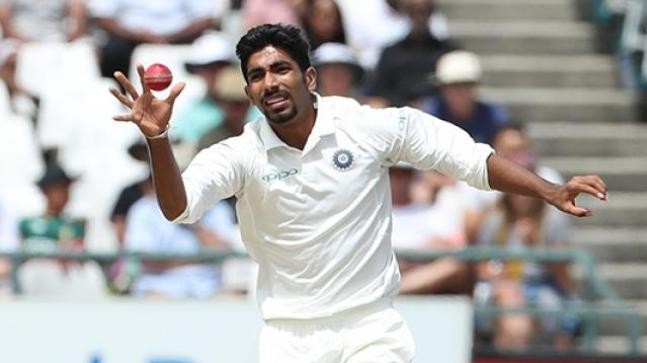
After two days of attritional batting, Jasprit Bumrah showed that bowlers had a place on this seemingly flat MCG surface, displaying outstanding mastery of skills in a career-best 6 for 33 to send Australia packing for 151. It was the standout performance on a third day that overturned much of what had been previously said and written about this Test.
For two days, as India went about their seemingly endless first innings, there were cries lamenting a dead surface, a long, meandering draw, and suggestions that the MCG be stripped of Boxing Day-hosting honours. After a 15-wicket Friday, a draw looked highly unlikely.
Just how did it come down to this? Never mind what indications the surface had given over the past two days, with moments of unpredictable bounce, puffs of dust, and gradually widening cracks - this was a twist no one really saw coming. There is no one answer. This was a combination of many factors.
Brilliant as Bumrah and India's bowlers were, Australia were plagued by a dearth of batsmen who could hang in at the crease - for lack of skill or intent. That the gates opened for Australia's procession was down to Aaron Finch and Marcus Harris giving up their wickets. On an unpredictable surface, it was a critical opening for the skillful Bumrah to disarm the batsmen with pace and variety.
It gave India a 292-run first-innings lead - one that wins you Test matches more often than not. Then India - having decided against the follow-on, presumably to avoid the prospect of batting last - came out looking to play their shots, and kept finding the fielders. It meant Pat Cummins, by light years Australia's best player in this match, had better figures in six overs than those after 34 in the first innings. By stumps, India had lost five of their top six, but, most crucially, had a lead touching 350.
All this with the dodgy bounce not even being an entity for much of the day. In fact, only one ball - a back-of-a-length delivery from Mohammed Shami that snuck under the bat of Usman Khawaja - misbehaved during the first hour. By then, Australia had already lost both their openers.
Much as India's bowlers were excellent through the day, Virat Kohli's astute field settings were critical to the team's success in this period. Finch's dismissal to Ishant Sharma's full ball, which he clipped to the swooping Mayank Agarwal at short midwicket, was a replica of his dismissal to Pakistan's Mohammad Abbas in Dubai. It was a sign that India had recognised a weakness - reinforced by Ishant feeding the shot with his lengths and Kohli stationing a catching midwicket in the first place.
Bumrah then sent back Marcus Harris with a short ball marked out by astute match awareness. With memories still fresh of the blow he had dealt to Harris' helmet late on day two, Bumrah played on any lingering tentativeness by banging another in and angling it into the batsman. Cramped for room while hooking compulsively, Harris only offered Ishant Sharma a simple catch at long leg.
The ball was the beginning of an incisive spell from Bumrah that showed how well he had sussed out the surface and each batsman's weakness. His stunning slower ball - having consistently hit speeds upwards of 140 kph until then - that dipped prodigiously on Shaun Marsh, hanging back in his crease, to trap him lbw off the last ball before lunch, was perhaps the ball of the day.
If Marsh had met his end due to lack of pace, Travis Head was done in by too much of it - a ripping inswinger that Head played all around to lose his stumps. The full balls were interspersed among shorter ones, which meant the batsmen were least anticipating them, and the seam position, all through, was terrific, allowing Bumrah to extract any purchase the surface offered.
He reaped the benefit of that seam position when Tim Paine edged a straightening fifth-stump delivery to Rishabh Pant. By the time Nathan Lyon was done in by a 146 kph inswinger - following a bouncer - Bumrah had the most wickets for an India bowler in away series over a year. He now has five-wicket hauls in South Africa, England and Australia, all in his first year in Test cricket.
By the end of the day, India were at the receiving end of a similarly destructive spell from Cummins. After nearly 13 wicketless overs, Hanuma Vihari was bounced out for the second time in the match, fending at one that lifted unexpectedly at him. Cheteshwar Pujara and Virat Kohli fell for ducks in identical fashion - flicking Cummins to leg gully - in the same over. Ajinkya Rahane strangled a short ball at his ribs for a catch down the leg side off the first ball of Cummins' next over, which left Rohit Sharma facing the hat-trick ball. He barely survived it, pulling just past a diving leg gully.
The smiles reappeared on the faces of a flagging Australian line-up at long last, and by the end of the day 33,477 fans at the MCG found their voice again. Cummins had 4 for 10. India were 54 for 5. And Nathan Lyon was getting his offbreaks to turn and jump out of the rough. Under regular circumstances, these would be reasons to rejoice for Australia. On this day, it was a stark reminder of the road ahead of the team.


.jpeg)

